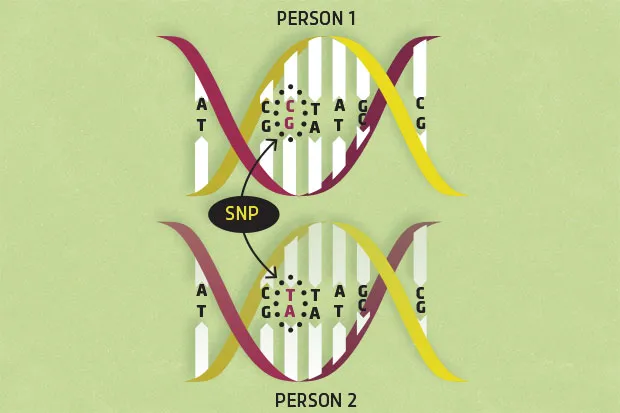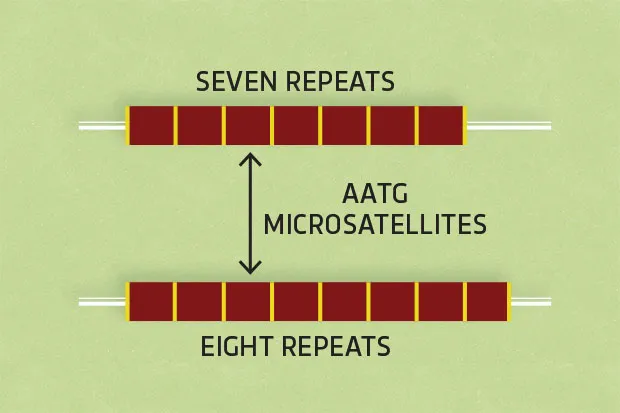The human genome is our complete set of 23 chromosomes. It’s made from DNA and is over three billion letters long. The differences between two individuals are most easily found at locations that commonly vary between us – genetic variants. Here are three different types that are used to compare people
Single nucleotide polymorphisms

Nucleotides, the building blocks of DNA, include one of four chemical letters: A, C, G or T. The most common genetic variations in humans are ‘single nucleotide polymorphisms’, known as SNPs. These are positions in DNA where two people might carry the same letter, or different letters. There are 10 million SNPs across the genome and the vast majority don’t affect how your body works. Personal genomics firms like 23andMe offer tests that read SNPs to generate a DNA profile, which is compared against other profiles in their databases to indicate your family history, ethnic background and risk of inherited diseases.
Microsatellites

Approximately 3 per cent of the human genome is composed of microsatellites, also known as ‘short tandem repeats’ (STRs). Each microsatellite is a repeating unit made up of one to six DNA letters. The number of repeats varies among people. For example, at any given location you might carry seven copies of the unit AATG, whereas someone else might have a variant with eight copies. The FBI’s Combined DNA Index System (CODIS) database has profiles created from 20 positions. Such profiles are also used in forensics and paternity testing, comparing two individuals to see if they share the same number of repeats at each location.
Epigenetic marks

While they aren’t technically genetic variants, epigenetic marks do contribute to the differences among people. Epigenetic marks are chemical modifications to DNA and its associated proteins that can influence whether genes are switched on or off, and therefore affect the behaviour of our cells. Some marks are attached and removed during the course of development, others are the result of lifestyle choices such as smoking. Scientists can now read where marks highlight sentences on DNA, meaning we could soon take tests that create epigenetic profiles, which could be used in forensics to identify a smoker, for instance. Such personal epigenomic reports might be able to reveal information about your physical features.
Follow Science Focus onTwitter,Facebook, Instagramand Flipboard